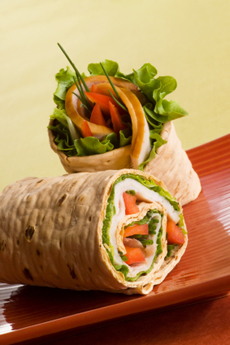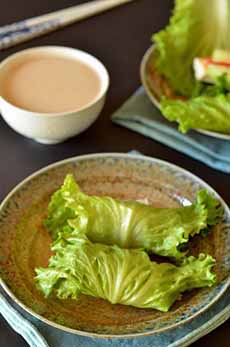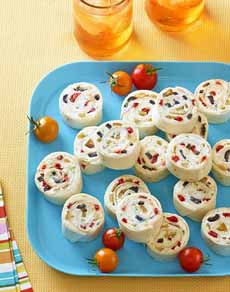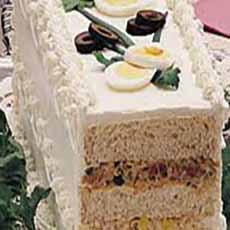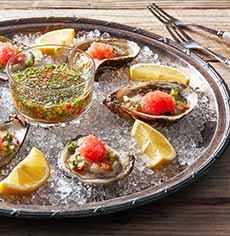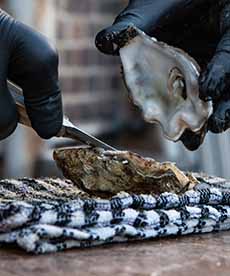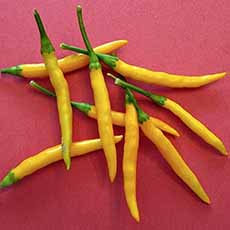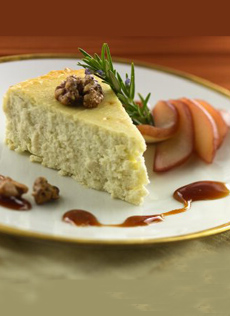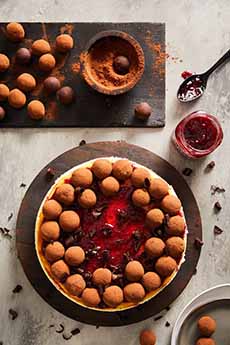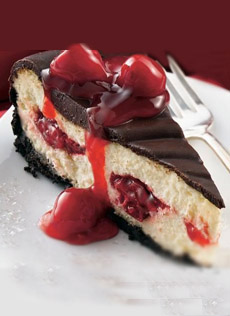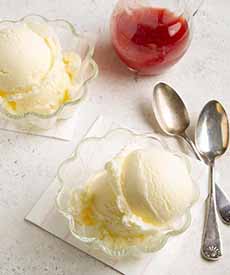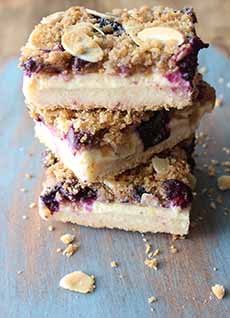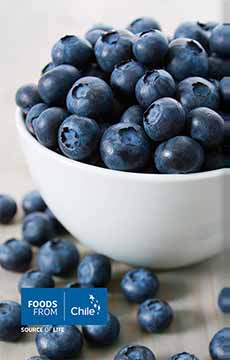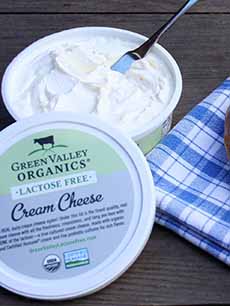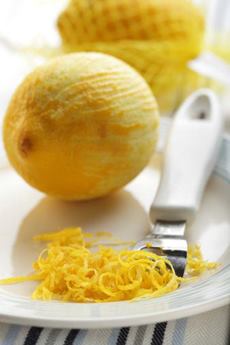|
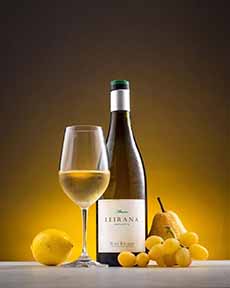
[1] Uncork a bottle of Albariño, a perfect summer one (photo © Foods & Wines From Spain | Facebook).

[2] Albariño is straw gold in color (photos #2 and #5 © Rías Baixas Wines | Facebook).
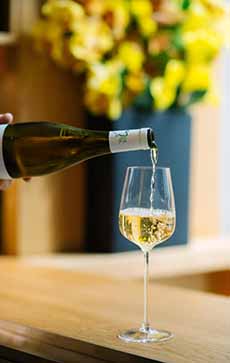
[3] Pouring a glass of Alvarinho from the Ribiero region of Portugal. Here’s more about it (photo © Follow The Camino).

[4] Instead of a pricey Chablis, try an Albariño with oysters and plats de mer. It’s much more reasonable (photo © Alvin’s Wine Bar | Paradise Point, Queensland, Australia).
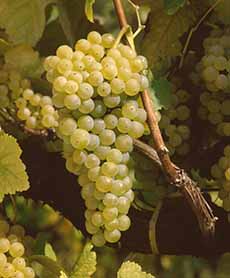
[5] A cluster of Albariño grapes.
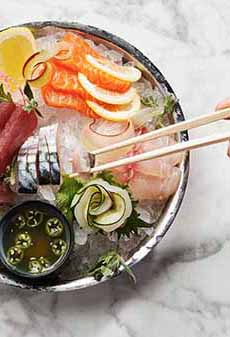
[6] Pair Albariño with raw fish: ceviche, crudo, poke, sashimi (in photo), sushi, tartare, tiradito
|
|
August 1st is International Albariño Day, celebrating what many consider to be Spain’s premier white wine.
Albariño (al-bar-EEN-yo) is an aromatic white wine grape that is native to the Northwest Iberian Peninsula.
Its growing region spans Spain and Portugal (in Portuguese it is spelled Alvarinho [al-var-EEN-yo])*. “Albus” is Latin for white.
It’s a cool-climate grape, with thick skins that enable it to thrive in cooler weather.
The vines have great longevity. They can grow to upwards of 300 years of age.
Albariño’s primary growing regions are:
The Rías Baixas section of Galicia in northwest Spain. It’s the world’s largest grower of Albariño (32,500 acres / 13,150 hectares under cultivation).
Spain’s Albariño is vinified in a more modern style, crisp and citrusy.
The Vinho Verde region of northwest Portugal, where the grape and wine are called Alvarinho. A major portion of the Alvarinho wines is Vinho Verde, named for the region in the far north. Portugal is the second-largest grower of Albariño (14,300 acres / 5,782 hectares).
Vinho Verde has more of an “old world” flavor palate: softer with tropical fruit hints [source].
California’s Central Coast is a small grower (~300 acres / 121 hectares). There are some Albariño plantings in California’s cool climate regions of Carneros and Edna Valley, and in Oregon and Washington.
Much smaller plantings can be found in Australia, Brazil, Chile, New Zealand, and Uruguay. The wine has been growing in popularity in the latter.
In a recent Decanter World Wine Awards, medal-winning wines Albariños came from Argentina, France, Moldova, New Zealand, South Africa, Ukraine, the United States, and Uruguay, including a Best in Show (Mar de Frades Finca Monteveiga Albariño from Rías Baixas).
Here are more top-scoring wines to try.
THE FLAVOR OF ALBARIÑO/ALVARINHO
Albariño/Alvarinho wines are generally light with bracing acidity. Known as aromatic wines, they offer elegance, complexity, dryness, crispness, and fruit flavors.
They are low-alcohol wines, with levels ranging between 8.5% to 11.5% A.B.V., and some up to 13%.
(A.B.V. refers to alcohol by volume, in all alcoholic beverages. Double the A.B.V. to get the proof.)
Albariño is meant to be consumed young, as its charming aromatics fade all too quickly after bottling. When you get to the three-to-five-year range, drink it up!
Albariño should always be served chilled but never ice-cold. Low temperatures suppress both the flavors and the aromas of any wine.
Depending on the terroir†, you’ll find different flavor and aroma profiles in Albariño.
Flavor. The classic Albariño wines of Iberia usually have exceptional freshness.
Their flavor profile ranges from tart citrus to stone fruits, with tropical fruit aromas. When you taste the wine, see if you find any of the following:
Citrus: Grapefruit, Lemon, Lime
Honeydew
Honeysuckle
Stone Fruit: Apricot, Nectarine, Peach
You may find a resemblance to some Sauvignon Blanc wines.
Some people also liken Albariño to Vermentino, a light-bodied white wine that grows mostly on the Italian island of Sardinia.
Aroma. On the nose, the grapes yield aromas of almonds, grassiness, stone fruits (especially apricot and peach), and white flowers‡.
Some compare the aroma to Gewürztraminer and Viognier.
Depending on the terroir, the wines may also have a nice minerality.
The wines can also show a subtle salinity (the barest whiff of the sea), owing to their proximity to the Atlantic Ocean (they are “coastal” wines).
PAIRING ALBARIÑO WITH FOOD
With its light body, albariño is considered a warm-weather wine ideal for lighter dishes.
Since its acid cuts through fat and oil, Albariño can also be a great match with fatty fish like salmon, and even fatty meats like pork belly.
Consider Albariño for light- to middle-intensity foods. Dishes that feature citrus and/or aromatic herbs are a definite thumbs-up.
Serve Albariño with:
Cheeses:
+ Fresh cheeses like burrata and chevre (goat cheese)
+ Salty cheeses like blue cheeses and feta
+ Semi-hard cheeses such as Asiago, Cheddar, Colby, Edam, Gouda, and Manchego
+ Soft cheeses like Brie and Camembert
+ Cheese dishes like fondue, raclette, and Welsh rabbit
Green salads, Caprese salad, Caesar salad
Fried, grilled, poached, and roasted fish (even fish tacos!)
Grilled and roasted vegetables
Light-colored sauces, fresh green herbs, salsa verde (no rich sauces)
Pasta with olive oil or light sauce (cream, garlic, white wine)
Raw or cured fish: ceviche, crudo, poke, sashimi, seafood salad, sushi, tartare, tiradito
White meats: chicken, pork, rabbit, turkey, white sausage, veal (no heavy preparations)
White pizza
Risotto, especially seafood and vegetable
Shellfish: clams, crab, lobster, mussels, oysters, shrimp
If you pour Albariño with one of these courses, it will also serve as a great palate cleanser before serving a heavy meat course.
|
THE HISTORY OF ALBARIÑO
The Albariño grape has been cultivated since ancient Roman times. Albariño grape seeds dating to between the second and fourth centuries C.E. have been found in an old Roman salt mine in Vigo, Galicia.
Over much of its lifetime, the Albariño grape was primarily used in blends.
But after the phylloxera outbreaks in the 19th century, the replanted Albariño emerged as a wine in its own right.
It became known as the primary grape of the Rías Baixas winemaking region in Galicia, Spain, where it comprises around 90% of the grapes grown.
The grape was long thought to have been brought to the monastery of Armenteira in Galicia by Cluny monks in the 12th century, during their journey along the Camino de Santiago (the Way of St. James).
However, recent scholarship indicates that the grape is native to Galicia.
For centuries, the wine was produced by the religious orders, since they were the main owners of the vineyards.
From Galicia, the cultivation of the grape and the production of Albariño wine spread throughout the Middle Ages to other regions of the Rías Baixas, eventually reaching Portugal [source].
By the end of the 19th century, following revolutions that swept through Europe, the monasteries’ lands were confiscated and auctioned off.
By the mid-20th century, the properties began to move from the hands of the nobility to small producer commoners.
For centuries if not millennia, Albariño/Alvarinho vines could be found casually growing around the trunks of poplar trees and in bushes along the outside margins of fields—a practice that still exists in Portugal’s Vinho Verde region.
Albariño In The 20th Century
In the middle of the 20th century, growers “got serious” and made investments to produce better quality grapes and wines.
Also in the 20th century, Albariño vines began to be planted in other areas, including Argentina, California, and Chile, and then to France, Moldova, New Zealand, South Africa, Ukraine, and Uruguay.
While Albariño blends still prevailed through most of the 20th century, in 1986 the Spanish government established the Rías Baixas Denominación de Origen (D.O.).
As a result, winemakers began to produce varietal Albariño wines, crafted primarily with contemporary European and American tastes in mind: the refreshing light body described above, with flavors of grapefruit, honeydew, lemon zest, nectarine, saline, and a touch of bitterness at the end [source and source].
In Portugal, however, blends endure. Most Alvarinho is made into Vinho Verde, which is a blend of white grapes, all indigenous to Portugal‡‡.
So what’s next?
It’s you, heading to the wine store to buy a few different bottles of Albariño and Vinho Verde for a tasting.
________________
*The wine is also known as Albarina, Alvarin Blanco, Alvarinha, Alvarinho, Azal Blanco, Galego, and Galeguinho.
†Terroir, pronounced tur-WAH, is a French agricultural term referring to the unique set of environmental factors in a specific habitat that affects a crop’s qualities. It includes climate, elevation, proximity to a body of water, slant of the land, soil type, and amount of sun. These environmental characteristics give a fruit or vegetable its unique character.
‡These aromas can include acacia, gardenia, jasmine, lily of the valley, orange blossom, and tuberose.
‡‡The two predominant grapes in Vinho Verde are Alvarinho and Loureiro but can also include Arinto, Azal, Avesso, and Trajadura.
CHECK OUT WHAT’S HAPPENING ON OUR HOME PAGE, THENIBBLE.COM.
|
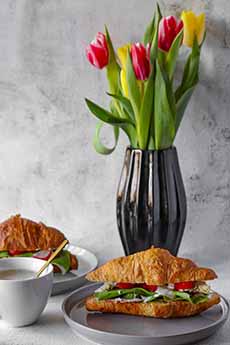
 [2] There are dessert sandwiches, too, like this chocolate panini served with a side of ice cream (photo © Parma 8200 | Bloomington, MN [alas, permanently closed]).
[2] There are dessert sandwiches, too, like this chocolate panini served with a side of ice cream (photo © Parma 8200 | Bloomington, MN [alas, permanently closed]).
